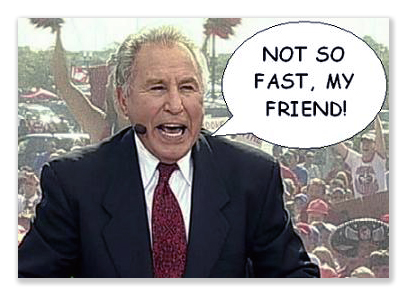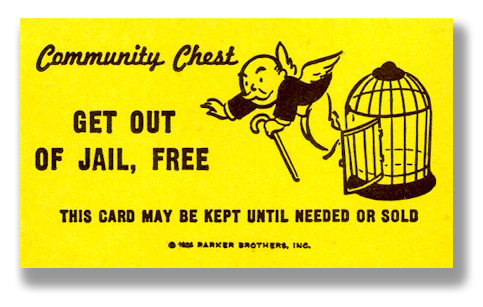We post news and comment on federal criminal justice issues, focused primarily on trial and post-conviction matters, legislative initiatives, and sentencing issues.

AIDING, ABETTING, ATTEMPTING, AND GUNNING
 Gary D. Harris got convicted of aiding and abetting 2nd-degree murder, aiding and abetting attempted robbery, and aiding and abetting using or carrying a firearm during and in relation to a crime of violence. He got hammered: 420 months for the aiding and abetting murder, and an extra 60 months for the 18 USC § 924(c) charge.
Gary D. Harris got convicted of aiding and abetting 2nd-degree murder, aiding and abetting attempted robbery, and aiding and abetting using or carrying a firearm during and in relation to a crime of violence. He got hammered: 420 months for the aiding and abetting murder, and an extra 60 months for the 18 USC § 924(c) charge.
Gary filed a post-conviction habeas corpus motion under 28 USC § 2255, but it failed like most of them do. After United States v. Davis changed the landscape on what crimes were and were not crimes of violence, Gary filed a second 28 USC § 2255 motion.
A second § 2255 is not easy to file. A prisoner must get permission from the Court of Appeals to file one, and the standards are tough: you’ve got to have newly-discovered evidence that pretty much exonerates you or be the beneficiary of a new Supreme Court constitutional decision that is retroactive.
Gary asked the 6th Circuit for permission. Last week the 6th Circuit turned him down.
 Gary argued his consecutive 60-month sentence had to be vacated because the district court might have imposed that sentence under the unconstitutionally vague “residual clause.” What’s more, Gary argued, his § 924(c) sentence couldn’t fall under the “elements clause” either, because neither his conviction for aiding and abetting second-degree murder nor his conviction for aiding and abetting attempted robbery could have constituted a “crime of violence.”
Gary argued his consecutive 60-month sentence had to be vacated because the district court might have imposed that sentence under the unconstitutionally vague “residual clause.” What’s more, Gary argued, his § 924(c) sentence couldn’t fall under the “elements clause” either, because neither his conviction for aiding and abetting second-degree murder nor his conviction for aiding and abetting attempted robbery could have constituted a “crime of violence.”
It’s an appealing argument. It seems like you could aid or abet a violent crime without committing an act of violence yourself, like loaning your car to someone who uses it to rob a bank. But the Circuit didn’t buy it. “To justify relief under § 2255,” the 6th said, Gary had to not only show “constitutional error but also harm that he suffered from that error.” He had to “establish that he could not have been sentenced to the consecutive 60-month prison term under § 924(c)(3)’s elements clause. Because the 18 USC § 2113 crime of aiding and abetting attempted robbery necessarily constitutes a crime of violence,” the Court said, Gary cannot do that.
So aiding and abetting and attempted crimes of violence are themselves violent. And the Garys of the world lose. Right?
 As Lee Corso might say, “Not so fast, my friend.” Yesterday, the Supreme Court heard argument in United States v. Taylor, where the issue is whether an attempt to commit a Hobbs Act robbery is a crime of violence. The outcome of that case could reopen the aiding and abetting/attempt issue for hundreds, if not thousands, of inmates.
As Lee Corso might say, “Not so fast, my friend.” Yesterday, the Supreme Court heard argument in United States v. Taylor, where the issue is whether an attempt to commit a Hobbs Act robbery is a crime of violence. The outcome of that case could reopen the aiding and abetting/attempt issue for hundreds, if not thousands, of inmates.
Justin Taylor was a Richmond, Virginia, pot dealer who robbed his buyers. This was a business model with great short-term results, but lousy for building customer loyalty. In August 2003, Justin and his sidekick planned just such a robbery. Justin sat in the getaway car while his partner pulled off the heist. The buyer was unwilling to turn over his money, so Justin’s buddy shot him dead. Justin and his partner fled without the money.
Justin was convicted of Hobbs Act conspiracy and a crime of violence under § 924(c). He got 20 years for the conspiracy and another ten for using a gun during a crime of violence.
 After Davis, Justin filed a § 2255 motion, arguing that his crime – because it was a mere attempt – was not a crime of violence. That meant that the 10-year sentence for using the gun would have to be thrown out. The U.S. Court of Appeals agreed, vacating Justin’s § 924(c) conviction. “Because the elements of attempted Hobbs Act robbery do not invariably require ‘the use, attempted use, or threatened use of physical force,’ the offense does not qualify as a ‘crime of violence’ under § 924(c),” the appeals court said.
After Davis, Justin filed a § 2255 motion, arguing that his crime – because it was a mere attempt – was not a crime of violence. That meant that the 10-year sentence for using the gun would have to be thrown out. The U.S. Court of Appeals agreed, vacating Justin’s § 924(c) conviction. “Because the elements of attempted Hobbs Act robbery do not invariably require ‘the use, attempted use, or threatened use of physical force,’ the offense does not qualify as a ‘crime of violence’ under § 924(c),” the appeals court said.
At yesterday’s argument, the Government complained that the Fourth Circuit “has excised from § 924(c) a core violent federal crime, based on the imaginary supposition that someone might commit it with a purely non-threatening attempted threat and yet somehow still come to the attention of law enforcement and be prosecuted.”
But just how imaginary would such a supposition? That question consumed the argument session.
Chief Justice John Roberts asked at one point just what charges Woody Allen’s character in “Take the Money and Run” would have faced for handing the note “I have a gub” to the teller. Justin’s lawyer, Michael Dreeben, said the Woody Allen character’s actions would violate the Hobbs Act. “An attempt that fails is still prosecutable as an attempt,” Dreeben said.
 As always, the Government predicted the collapse of the judicial system and wholesale release of inmates if Justin Taylor’s view prevailed. Justice Sonia Sotomayor was justifiably skeptical, pointed out that whether an attempt could support a § 924(c) was a question of enhancement, not convictability (my word, not the Justice’s). She said the government made it sound like a win for the defense would mean letting out “all of these horrible criminals,” but she emphasized that defendants still face substantial sentences on other charges, like Justin’s 20-year conspiracy term that isn’t at issue here.
As always, the Government predicted the collapse of the judicial system and wholesale release of inmates if Justin Taylor’s view prevailed. Justice Sonia Sotomayor was justifiably skeptical, pointed out that whether an attempt could support a § 924(c) was a question of enhancement, not convictability (my word, not the Justice’s). She said the government made it sound like a win for the defense would mean letting out “all of these horrible criminals,” but she emphasized that defendants still face substantial sentences on other charges, like Justin’s 20-year conspiracy term that isn’t at issue here.
Justice Brett Kavanaugh worried about a ruling for the defense. “Congress obviously… imposed this because there’s a huge problem with violent crime committed with firearms and thought that the sentences were not sufficient to protect the public,” he said.
Harris v. United States, Case No. 21-5040, 2021 U.S. App. LEXIS 35494 (6th Cir., December 1, 2021)
United States v. Taylor, Case No. 20-1459 (Supreme Court, oral argument December 7, 2021)
Bloomberg Law, Violent-Crime Definition Gets High-Court Hearing in Gun Case (December 7, 2021)
– Thomas L. Root

